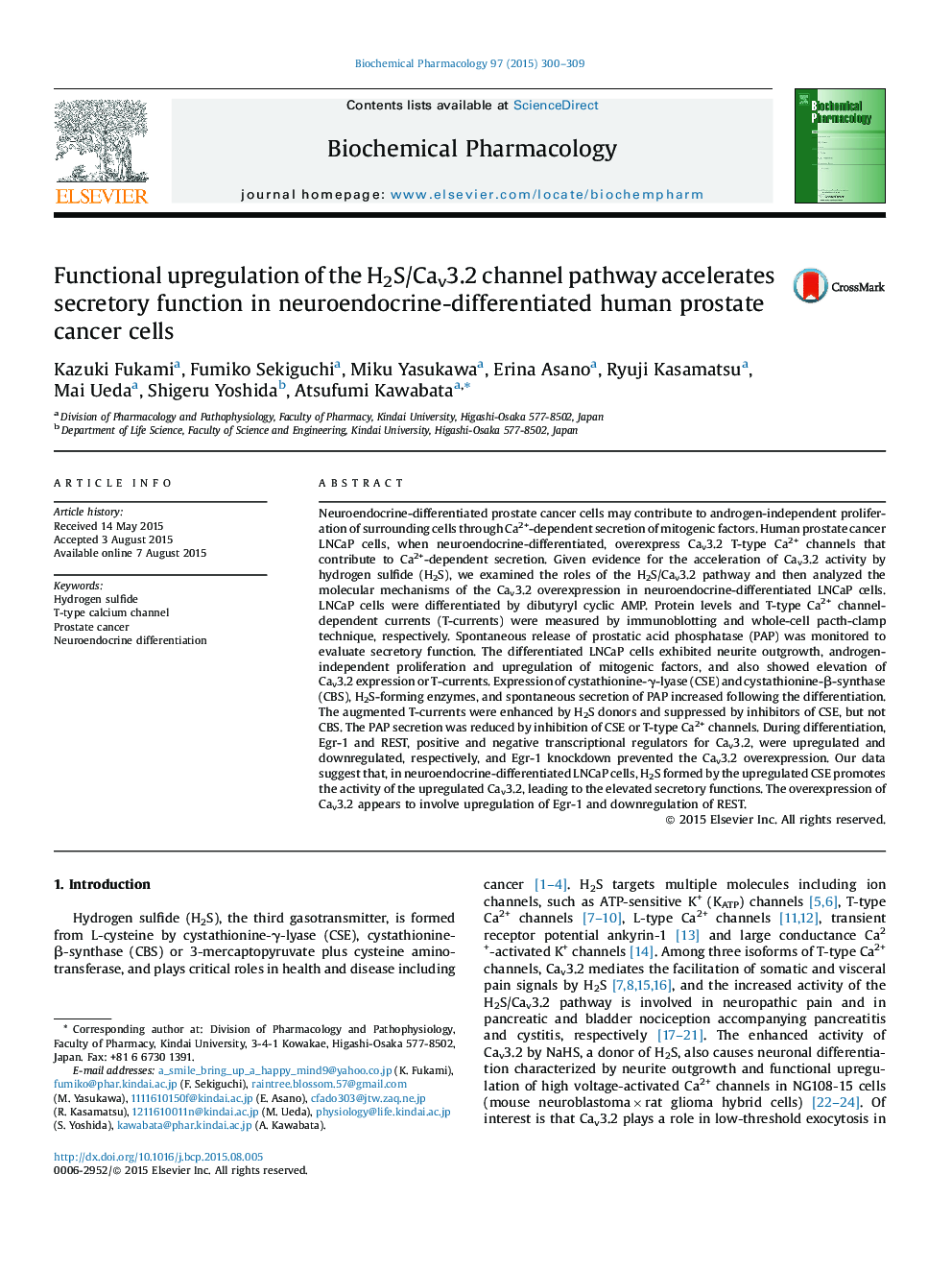| کد مقاله | کد نشریه | سال انتشار | مقاله انگلیسی | نسخه تمام متن |
|---|---|---|---|---|
| 2512097 | 1118313 | 2015 | 10 صفحه PDF | دانلود رایگان |

Neuroendocrine-differentiated prostate cancer cells may contribute to androgen-independent proliferation of surrounding cells through Ca2+-dependent secretion of mitogenic factors. Human prostate cancer LNCaP cells, when neuroendocrine-differentiated, overexpress Cav3.2 T-type Ca2+ channels that contribute to Ca2+-dependent secretion. Given evidence for the acceleration of Cav3.2 activity by hydrogen sulfide (H2S), we examined the roles of the H2S/Cav3.2 pathway and then analyzed the molecular mechanisms of the Cav3.2 overexpression in neuroendocrine-differentiated LNCaP cells. LNCaP cells were differentiated by dibutyryl cyclic AMP. Protein levels and T-type Ca2+ channel-dependent currents (T-currents) were measured by immunoblotting and whole-cell pacth-clamp technique, respectively. Spontaneous release of prostatic acid phosphatase (PAP) was monitored to evaluate secretory function. The differentiated LNCaP cells exhibited neurite outgrowth, androgen-independent proliferation and upregulation of mitogenic factors, and also showed elevation of Cav3.2 expression or T-currents. Expression of cystathionine-γ-lyase (CSE) and cystathionine-β-synthase (CBS), H2S-forming enzymes, and spontaneous secretion of PAP increased following the differentiation. The augmented T-currents were enhanced by H2S donors and suppressed by inhibitors of CSE, but not CBS. The PAP secretion was reduced by inhibition of CSE or T-type Ca2+ channels. During differentiation, Egr-1 and REST, positive and negative transcriptional regulators for Cav3.2, were upregulated and downregulated, respectively, and Egr-1 knockdown prevented the Cav3.2 overexpression. Our data suggest that, in neuroendocrine-differentiated LNCaP cells, H2S formed by the upregulated CSE promotes the activity of the upregulated Cav3.2, leading to the elevated secretory functions. The overexpression of Cav3.2 appears to involve upregulation of Egr-1 and downregulation of REST.
Figure optionsDownload as PowerPoint slide
Journal: Biochemical Pharmacology - Volume 97, Issue 3, 1 October 2015, Pages 300–309